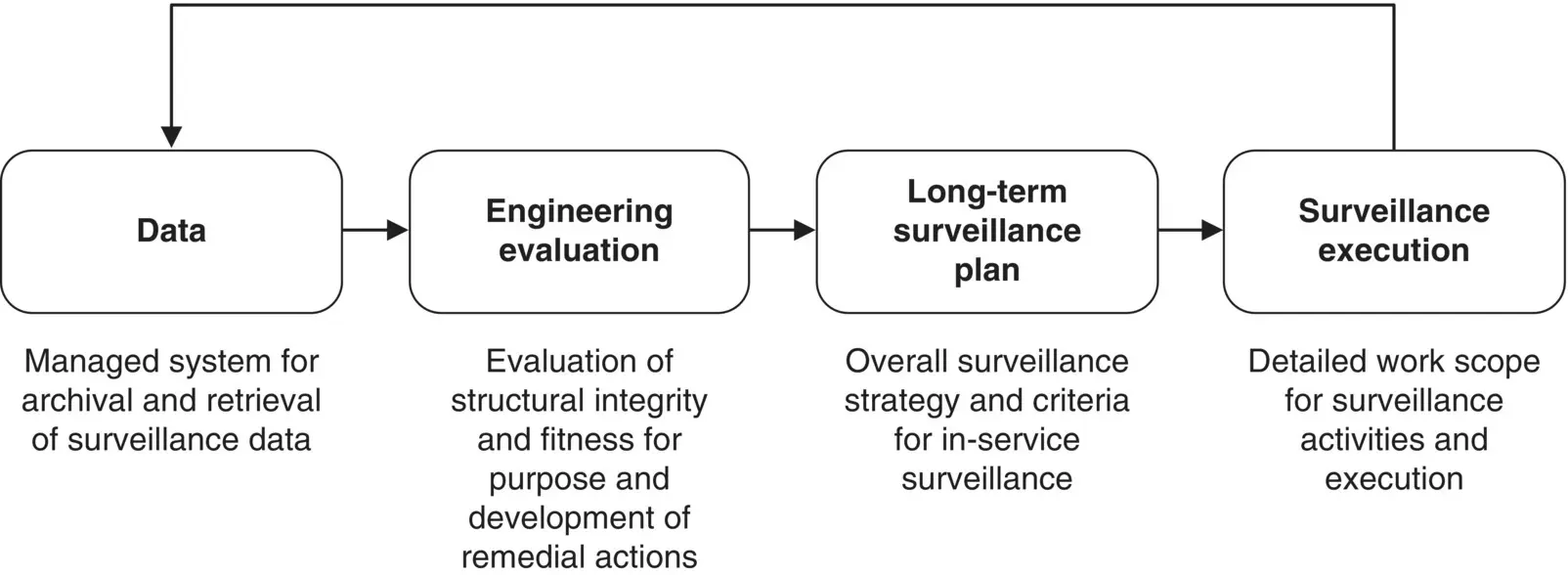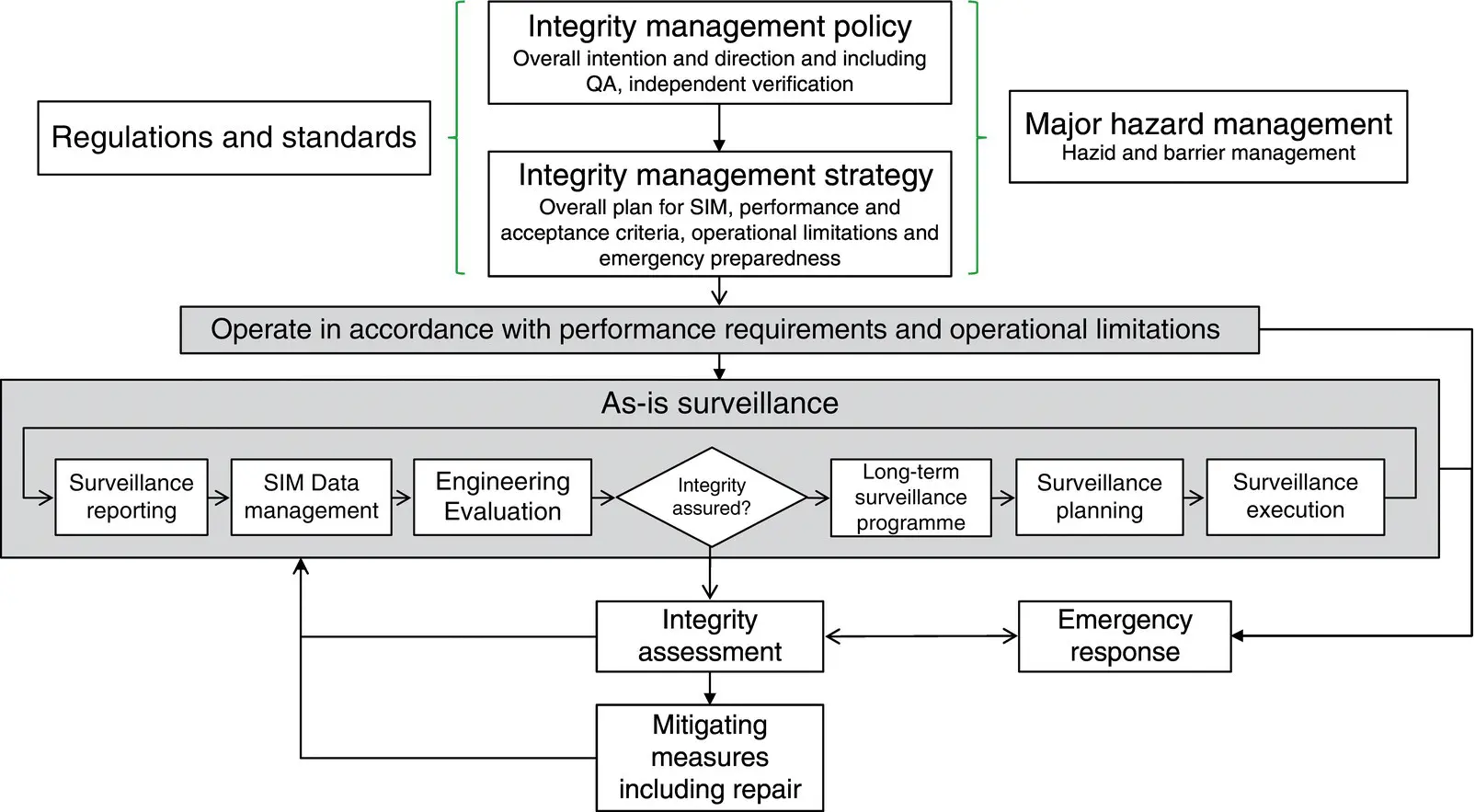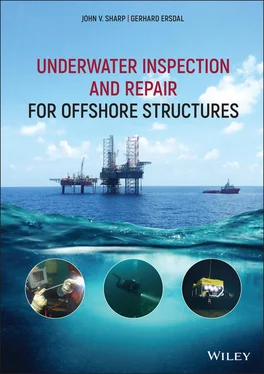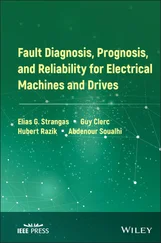The ISO 19902 (ISO 2007) took into account all the issues and methods that had been used to inspect, monitor, evaluate and assess fixed offshore steel structures over the previous years. ISO 19902 (ISO 2007) described four different types of inspection of the structure as shown below:
baseline: inspection soon after installation and commissioning to detect any defects arising from fabrication or damage during installation;
periodic: inspection to detect deterioration or damage over time and discover any unknown defects;
special: inspection required after repairs or to monitor known defects, damage or scour;
unscheduled: inspection undertaken after a major environmental event such as a severe storm, hurricane, earthquake or after an accidental event such as a vessel impact or dropped objects.
ISO 19902 (ISO 2007) stated that “the purpose of in‐service structural inspection is to determine, with a reasonable level of confidence, the existence and extent of deterioration, defects, or damage. Data collected during an inspection are needed to verify the integrity of the structure”.
ISO 19902 (ISO 2007) described the process of managing the integrity of structures with four major elements as shown in Figure 9, where inspection is the key element of both the long‐term surveillance plan and particularly the surveillance execution. The remaining two processes include the storage of inspection data and the evaluation of possible anomalies found during inspection.

Figure 9 Structural integrity management cycle (surveillance includes inspection of the condition, determination of loading, review of documents, etc., needed to determine changes that may affect the safety of the structure).
Source: Based on ISO (2007), ISO 19902:2007 Petroleum and natural gas industries—Fixed steel offshore structures, International Standardization Organization.
Assessment was introduced in ISO 19902 (ISO 2007) as an option following engineering evaluation if anomalies identified during inspection require a more detailed analysis.
A possible outcome of the evaluation or the assessment is the implementation of prevention measures which include structural strengthening and reduction of loads on the structure or mitigation actions; these might include measures such as operational restrictions and possible de‐manning.
This relatively new standard (at the time of writing) focusses on structural integrity management (ISO 2019a) based on other standards such as ISO 19002 (ISO 2007) and NORSOK N‐005 (Standard Norge 2017b) and N‐006 (Standard Norge 2015). It includes a section on developing an inspection strategy (plan) to be prepared from the engineering evaluation which should determine the likely existence and extent of any deterioration and damage. The inspection strategy should periodically be reviewed and updated throughout the service life based on new data and information being received from, for example inspection reports and structural evaluation and assessments. The types of inspection proposed follow that in other standards (e.g. API RP‐2A) with both scheduled and unscheduled inspections. The scope of work should include standard inspection methods such as GVI, CVI, FMD and NDE. Selection of appropriate inspection methods should be determined by qualified personnel based on knowledge and availability of the different methods. Inspection intervals for periodic inspections are selected according to the structural integrity strategy using a risk‐based approach. However, if an operator does not want to use a risk‐based approach, an alternative is a consequence‐based method developed from world‐wide experience which provides pre‐determined inspection intervals.
The ISO standard also addresses inspection methods and identifies specific areas for inspection, including underwater cathodic protection, coatings and air gap. The survey should include dimensional measurements to measure such quantities as damage size and geometry, member out‐of‐straightness, crack length and depth and depth of corrosion. Focussed inspection is proposed for several failure modes and degradation mechanisms such as impact damage from ships, debris and dropped objects, fatigue failure and damage to protective devices such as riser guards. The standard notes that structures are usually designed with a corrosion allowance in the splash zone, which should be monitored.
At the time of writing, this standard is in the process of being updated as a result of concerns expressed about its approach, particularly on the assessment part of the standard. In addition, structural integrity management is a rapidly evolving field given the pressures of the extending life of many platforms and the subsequent cost of inspection and repair.
NORSOK N‐005 (Standard Norge 2017b) was published in an updated version in 2017 and incorporated a major hazard‐based approach to the integrity management of structures. This approach is also implemented in other newer standards for structural integrity management such as ISO 19901‐9 (ISO 2019a). The approach is based on risk analysis methodology, understanding the hazards the structure is exposed to and minimising the likelihood of these hazards and possible unfavourable consequences occurring. In major hazard management this will typically include implementation of suitable safety measures (often called barriers or safety critical elements) and are established and maintained throughout the life of the facility. This current approach to SIM is based on the Norwegian and UK Major Hazard regulatory regimes.
As‐is surveillance as described in this standard includes activities to determine anomalies and changes of all types relevant for the safety of the structure. The most important of these surveillance activities is the inspection of the structure’s condition and the determination of loadings. The in‐service inspection process described in this standard is very similar to the process described in Figure 10.

Figure 10 An example of a typical SIM process based on a major hazard approach.
2.4 Standards and Recommended Practices for Mooring Systems
2.4.1 Introduction
Several recommended practices and standards address inspection and integrity management of mooring systems. API RP‐2I (API 2008) and API RP‐2SK (API 2005) have developed over many years and have been the industrial standards over this period. Recently, API issued a separate recommended practice (RP) for integrity management of mooring systems, API RP‐2MIM (API 2019b), which extends the guidance from these earlier RPs. NORSOK N‐005 (Standard Norge 2017b) and ISO 19901‐7 (ISO 2013) also address inspection of mooring systems.
Inspection intervals for chain mooring systems for floating structures are recommended in, for example API RP‐2I (API 2008) and NORSOK N‐005 (Standard Norge 2017b). The maximum interval between major inspections is linked to the age of the chain in years. For relatively new chains (i.e. 0–3 years) the recommended interval is 3 years; for slightly older chains (4–10 years) it is 2 years and for chains older than 10 years the interval is reduced to only 8 months. This short interval is very demanding and costly and hence chains are normally replaced before they reach the 10‐year criterion. Inspection of mooring systems can be undertaken visually by an ROV, but this has significant limitations. A more detailed inspection, e.g. by MPI, requires removal of the mooring and dockside inspection with significant cost and operational implications. More details of mooring line inspection are given in Section 4.9.
Читать дальше














